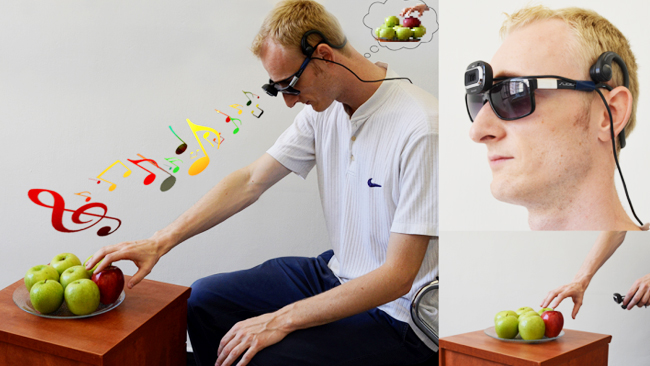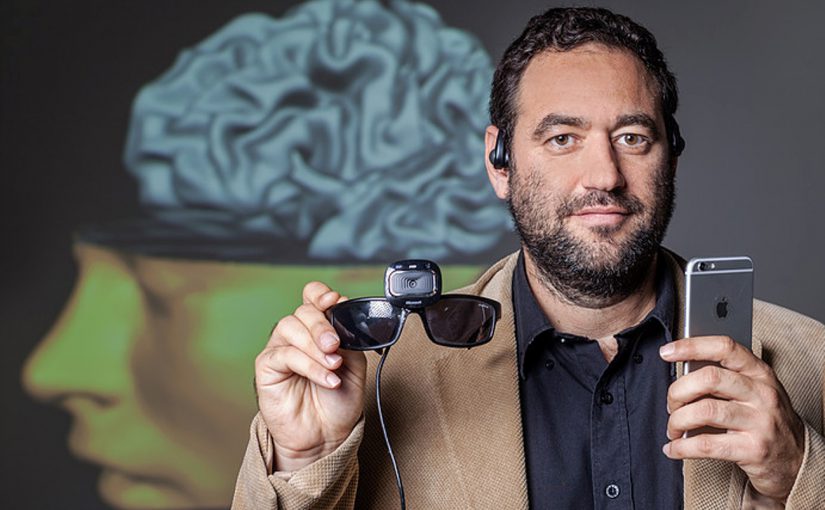When I asked my friends if they think it’s possible to see with their ears, they looked at me as if I was absurd. Indeed it sounds out of your mind at your first time hearing that. However, it’s been long known that blind people are able to compensate for their loss of sight by using other senses, relying on sound and touch to help them “see” the world. It was indeed made possible with a sensory substitution device (SSD), named EyeMusic.

Made possible by a team of researchers from Hebrew University in Jerusalem, they’ve created a software programme that translates visuals into audio that enables the blind to “see”. The device itself looks like any normal pair of sunglasses but with a special camera implanted on it and passes this data on particular sensors.

Using a range of musical tones, it develops a precise combination of melodies and sounds, various for each and every of the objects of the environment. For example, using EyeMusic people can distinguish an apple from a banana or an orange from a lemon, barely touching the fruit.
It works by representing the height of objects by the pitch of the sound – tall objects are high-pitch; low objects are lower pitch. The width of an object is represented by the duration of the sound while colour is represented by different musical instruments including the violin, trumpet and organ and different colour.
Pros and cons
- Brain stimulation
An advantage of this device is definitely how it has provided the opportunity to the visually impaired to experience a sense of sight, through the use of pitch, tone, duration etc to identify an object. Some might not have experienced anything close to visuals in their lifetime but this sensory substitution device allows them to do so, activating a very specific area of the visual cortex
- Distinctiveness
An interesting feature of EyeMusic is that it distinguishes not only different but specific shades of a colour, with every shade assigned a tone. This comes in handy when needed to separate objects distinctively where the tone of the object is important.
Cons
- PortabilityThe device itself is a wearable and easily portable, making it convenient for the user. However, it seems that this version needs to be connected to another device (laptop/computer) for it to work. This leads us to the next disadvantageNew technology
- Technology keeps up really fast and new technology offers more advanced ways of substituting sensory more than ever before. These exciting new devices can restore sight to the blind in ways never before thought possible. Eg. Google glasses, which are light and wearable on-the-go. EyeMusic has to constantly keep up to its game to match with the new technology or else it will turn obsolete
Alternative uses
- Visual rehabilitation
Apart from providing as a sensory substitution device, it can be used for research purposes to study brain function. The information captured could help facilitate in other technology developments in the similar area or beyond.
Design tool
- With the device’s distinguishing colour tone feature, that aspect of technology can be adopted for people doing colour theory/ design related works where colour is an important to deal with. It can help to minimize errors in the output of the work
